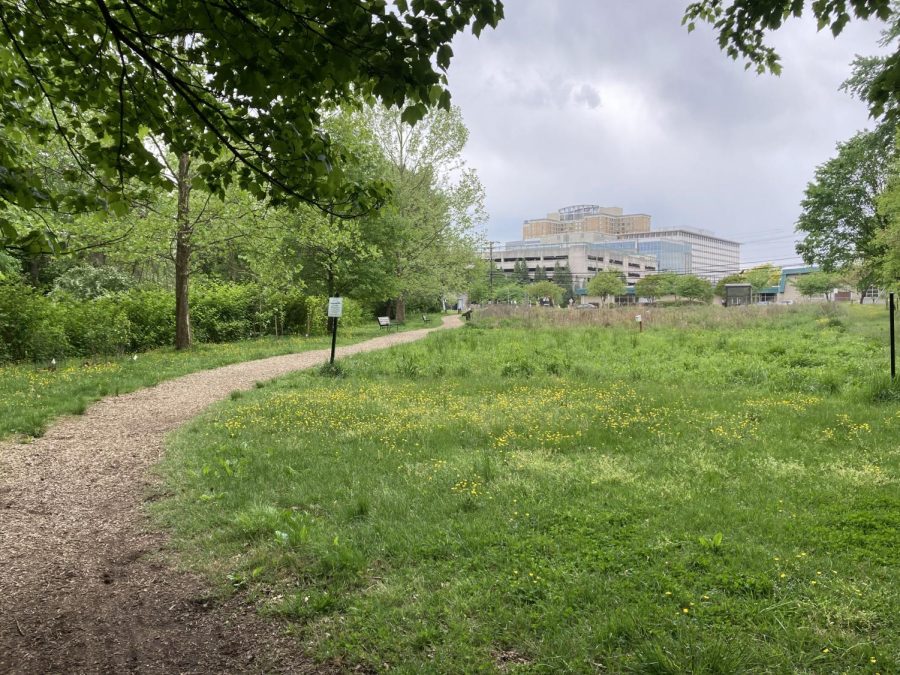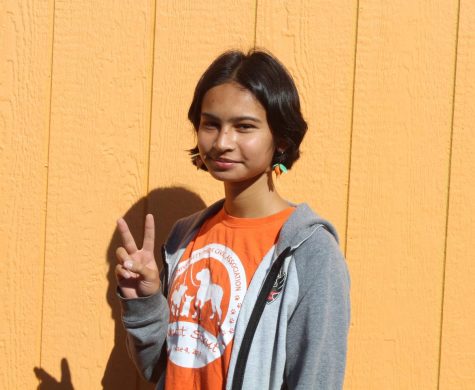Green Spaces Boost Urban Landscapes
University Park Pollinator Meadow, maintained by town volunteers, blanketed in buttercups.
May 1, 2023
As a child, when the streets and playgrounds became too scorched in the summer, I would wander through the green spaces of my neighborhood, oak-lined paths, cool beds of clover, and long fields of wildflowers, to get away from the heat. Even now, I often walk through University Park’s Pollinator Meadow, once an abandoned lot, maintained by town volunteers to recultivate the diversity of native wildflowers and pollinators. However, throughout my city, there are a number of undeveloped plots, similar in that they appear lush and green, but remain largely unused and host an imbalanced ecosystem. These few-acre overlooked green spaces, most subject to infill development, could be transformed into maintained greenways and parks that people in the neighborhood could use for recreation.
In a New York Times article published in 2019, “The relationship between humans and nature improves mental health and promotes prosocial behavior. But as cities grow, green space is squeezed out.” The lack of green spaces causes neighborhoods to become heat islands, as the United States Environmental Protection Agency (EPA) states that trees and vegetation provide shading and increase evapotranspiration, which helps cool down neighborhoods by 1-5 degrees Celsius.
City Parks Alliance, a non-profit organization based in Washington D.C., states that city parks attract businesses, reduce flooding, and trees help remove 7,111,000 tons of toxins from the air. “Greening of vacant urban land,” they write, “has been shown to decrease crime.” So if creating more parks from urban areas help the wellbeing of the community, then creating usable green spaces out of already existing green spaces, will be a more manageable way of providing parks for the neighborhood.
On the other hand, infill development, especially for affordable housing, is a necessary and effective means to house new residents and grow the community. However, most developers utilize vacant lots or abandoned buildings – areas already partially developed. In some cases, though, developers target areas of greenery. Parks, hiking trails, and woods that residents use for recreation. Located north of the University of Maryland (UMD) campus, the Guilford Woods hiking trail was nearly developed into student housing. Residents and students alike protested, forming the “Save Guilford Woods” movement to protect the park. As a result, the university canceled its plans for development in the woods.
Yet the need for student housing persists; in a 2021 article about the pause on development, the Washington Post confirmed that there were “environmental concerns” regarding the destruction of the park, but graduate students are “desperate” to find affordable housing near campus. Clearly green spaces, important to the well-being of residents, should be protected rather than invaded. However, neighborhoods, like those surrounding Guilford Woods, should actively maintain the green space, so that it has a balanced ecosystem, easy walkways, and is used often. It would be wrong to protect a space that hosts a disorganized, polluted, fragmented habitat, and that is infrequently used when others are in need of a place to live.
Every person should enjoy a pleasant walk through a park, even if they live in a concrete jungle, as it improves their mental health and brings people together to enjoy a lovely space. Urban neighborhoods should benefit from the cooling effect of greenery and the many wonderful benefits of vegetation for the city’s environment. Already existing parks should be protected and maintained so that the space is used most efficiently for its residents. And vacant green spaces – those that aren’t official parks, yet could still provide greenery for the community – should be nurtured so they may become spaces that provide a healthy habitat for both nature and humans.




